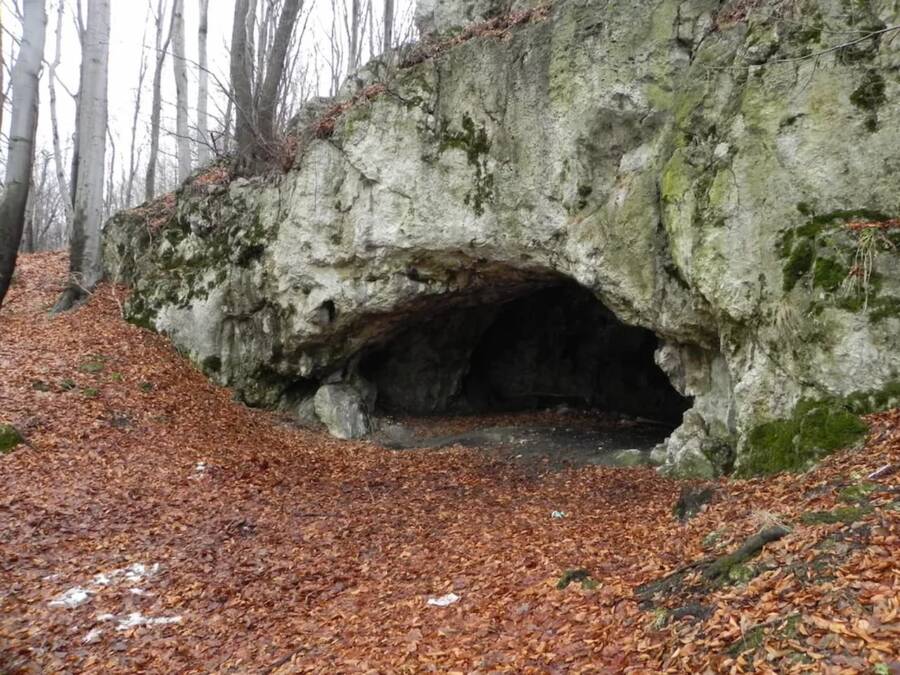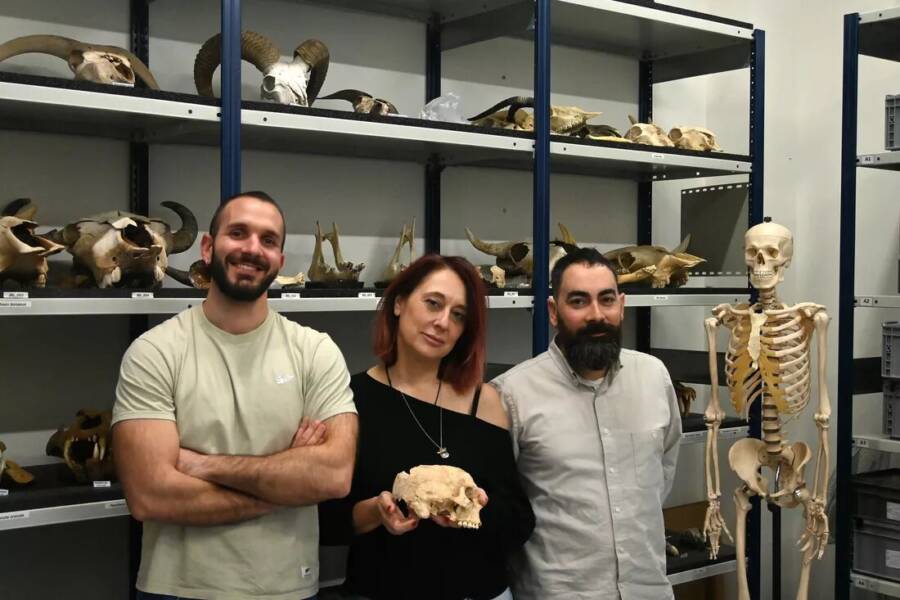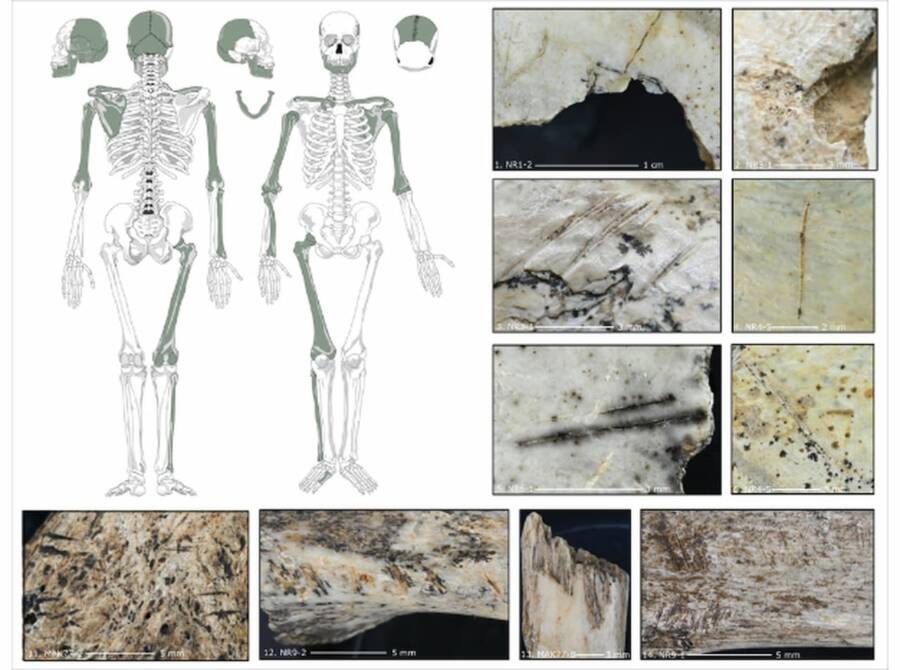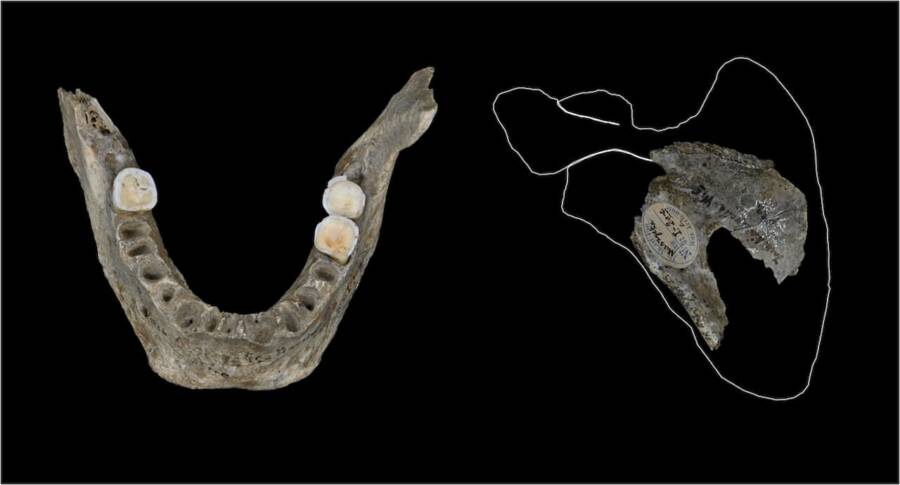Nearly 70 percent of the bone fragments examined featured cut marks and intentional fractures that suggested cannibals feasted on the brains and bone marrow of their victims.

Darek BobakThe entrance to Maszycka Cave in Poland, where cannibalized human remains dating back 18,000 years were discovered.
Within the depths of a cave in southern Poland, researchers made a gruesome discovery about the prehistoric people who lived in the area 18,000 years ago. A recent study analyzing human remains found in Maszycka Cave revealed evidence of cannibalism.
Nearly 70 percent of the bones examined contained evidence of human manipulation, such as cut marks. Researchers believe the cannibals prioritized the most nutritious parts of the body — the brain and bone marrow — potentially out of necessity as competition for food resources increased during the last Ice Age.
Evidence Of Prehistoric Cannibalism On Bones Found In A Polish Cave

Antonio Rodríguez-Hidalgo / IAM (CSIC-Junta de Extremadura)The three main authors of the study. From left to right: Francesc Marginedas, Palmira Saladié, and Antonio Rodríguez-Hidalgo.
Recently, an international team of researchers set out to analyze human remains discovered in Maszycka Cave in southern Poland. Archaeologists have explored and collected numerous artifacts from the cave, including stone tools, animal bones, and human remains, since the 19th century.
As detailed in a study recently published in Scientific Reports, the team analyzed 63 human bone fragments dating back to the Magdalenian period approximately 18,000 years ago.
The 3D microscopy techniques used to examine the bones, including femurs and skulls, uncovered evidence of violent cannibalism.
“The location and frequency of the cut marks and the intentional fracturing of the skeleton clearly show nutritional exploitation of the bodies, ruling out the hypothesis of funerary treatment without consumption,” Francesc Marginedas, a researcher at the Catalan Institute of Human Paleoecology and Social Evolution and the lead author of the study, stated in a press release.

Antonio Rodríguez-Hidalgo / IAM (CSIC-Junta de Extremadura)Signs of human manipulation on the bone fragments from Maszycka Cave.
At least 68 percent of the bones that were examined showed deliberate cut marks and fractures, pointing to the purposeful harvesting of human tissue, muscle, organs, and bone marrow shortly after death.
But why did prehistoric communities in Poland turn to cannibalism? Researchers suggest several possible explanations, including famine, intergroup violence, and competition for scarce resources.
The Possible Motivations Behind Prehistoric Cannibalism

Antonio Rodríguez-Hidalgo / IAM (CSIC-Junta de Extremadura)A human jaw bone from Maszycka Cave bearing evidence of cannibalism.
The earliest evidence of cannibalism in Europe dates back over 800,000 years to the Atapuerca Mountains of Spain. Historically, this taboo practice has been performed for reasons ranging from survival to competition between various groups.
“Cannibalism is a behavior that has been documented at various times in human evolution. In prehistoric contexts, it could respond both to survival needs and to ritual practices or even to dynamics of intergroup violence,” Dr. Palmira Saladié, a co-author of the study, stated in the press release.
As the study detailed, the cannibalization of the deceased was performed shortly after death and targeted the most nutrient-dense parts of the body. This has led experts to believe that the process was performed out of necessity, not for ritualistic purposes.
Around 18,000 years ago, Earth was emerging from the Last Glacial Maximum, the peak of the last Ice Age. The increase in population as the planet grew warmer may have led to increased tensions between groups who competed for territory and resources.
Five sites across Europe from the same time period have shown similar evidence of cannibalism. As researchers wrote in the press release, “This high number of sites together with the archaeological data has allowed researchers to suggest that cannibalism during the Magdalenian was part of the culture of these groups, whether consuming their own dead or those of their enemies.”
After reading about the evidence of prehistoric cannibalism discovered in a cave in Poland, learn about kuru, the fatal brain disease caused by eating other humans. Then, read about Joseph Stalin’s “Cannibal Island,” the Soviet gulag where prisoners were forced to eat each other.





